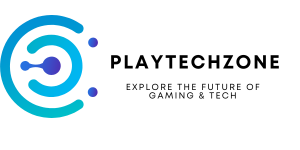By: Peter, Content Writer at Playtechzone.com
The emergence of ChatGPT sent shockwaves through the education sector. Many feared it would become the ultimate cheating tool, enabling students to bypass learning and snag easy grades. While those concerns are understandable, they represent a knee-jerk reaction to a powerful technology with the potential to revolutionize how we teach and learn.
Instead of viewing ChatGPT as a threat, educators and institutions should embrace its potential to enhance education. From personalized learning experiences to fostering critical thinking, ChatGPT offers a range of tools that can transform the educational landscape.
Initial Panic and the Rise of a New Perspective
The immediate response from many educational institutions was to ban ChatGPT. Schools blocked access, universities issued warnings, and fear-mongering headlines dominated the conversation. This reaction stemmed from a valid concern: ChatGPT’s ability to generate human-quality text on a vast range of topics could easily facilitate cheating.
However, as the dust settled, a more nuanced perspective emerged. Educators, researchers, and even OpenAI itself recognized the potential benefits of integrating AI into the classroom.
Beyond the Hype: Real-World Applications of ChatGPT in Education
ChatGPT isn’t just a fancy essay writer; it’s a versatile tool with applications across various educational contexts.
1. Personalized Learning:
Imagine a classroom where each student learns at their own pace, with materials tailored to their individual needs and learning styles. ChatGPT can make this a reality. It can generate personalized lesson plans, adapt content complexity based on student progress, and even provide targeted feedback.
EdTech companies like Quizlet are already leveraging this potential. Their new feature, Q-Chat, powered by ChatGPT, offers students a personalized learning experience akin to having a one-on-one tutor. (Source: Quizlet)
2. Fostering Critical Thinking:
Contrary to fears that ChatGPT would stifle critical thinking, educators are finding innovative ways to use it as a tool to enhance this crucial skill.
For instance, teachers are asking students to analyze and critique ChatGPT-generated text, identifying biases, inaccuracies, and logical fallacies. This approach encourages students to engage with information actively, developing their critical thinking and media literacy skills.
3. Rethinking Assessments:
If ChatGPT can easily ace standardized tests and generate high-quality essays, then perhaps it’s time to rethink traditional assessment methods. Instead of focusing solely on rote memorization and standardized testing, educators can leverage ChatGPT to design more authentic and engaging assessments that emphasize critical thinking, problem-solving, and creativity.
4. Empowering Teachers:
ChatGPT can also be a valuable tool for teachers, freeing up their time and allowing them to focus on what matters most: teaching.
Here are a few ways ChatGPT can empower educators:
- Generating engaging lesson plans and activities
- Providing differentiated instruction materials for diverse learners
- Automating administrative tasks like grading and communication
Embracing the Future of Education
The integration of AI into education is inevitable. Instead of fearing the unknown, we must approach it with a spirit of innovation and collaboration.
Here are some key takeaways for navigating this new frontier:
- Embrace experimentation: Encourage teachers to experiment with ChatGPT and other AI tools in their classrooms.
- Provide adequate support: Offer professional development opportunities to help educators effectively integrate AI into their teaching practices.
- Foster open dialogue: Create spaces for educators, students, and policymakers to discuss the ethical implications and potential challenges of AI in education.
The Future is Collaborative:
The emergence of ChatGPT presents a unique opportunity to reshape the educational landscape. By embracing collaboration, fostering critical thinking, and leveraging the power of AI, we can create a more equitable, engaging, and effective learning experience for all.
Additional Resources:
- International Society for Technology in Education (ISTE)
- The Walton Family Foundation
- Bloom’s Taxonomy
Remember, the goal is not to replace teachers with AI but to empower them with tools that enhance their ability to guide and inspire the next generation of learners.
